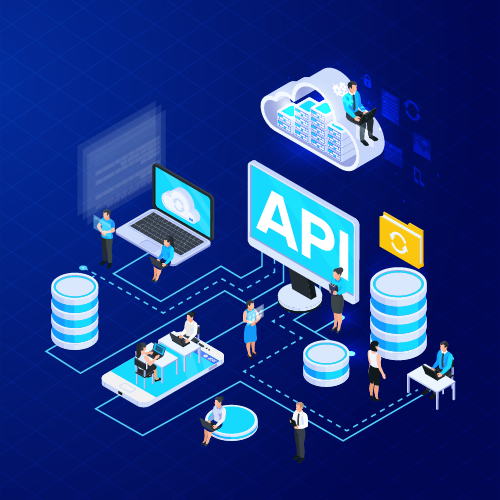Enterprise innovation will not fade despite 87% of organizations lacking the tech talent to back it. Instead of stifling software development progress due to 40 million vacant positions in 2020 and other challenges, the tech industry is responding with a powerful concept known as composability.
Composability brings building block-like construction to today’s rigid app development. Currently, many enterprises face substantial costs across staffing, planning, and coding needs. When a company’s toolset is slow and expensive to adapt, cutting-edge offerings are nearly impossible to achieve.
A composable approach repurposes existing code to keep enterprises lighter on their feet and set the pace for their competitors.
For the future of flexible internal workflows and customer-facing experiences, wise enterprises will become composable through the intersection of open-source and low-code app development.
What is composable software?
Composability allows enterprises to swap and pair software components at will. This powerful ability brings a few key benefits to new custom development projects:
- Write code once,
- Reuse code across multiple projects, and
- Stack the value via an ever-expanding component roster.
Composable software breaks core applications into specialized microservices. Gartner deems these “packaged business capabilities,” or PBCs, which invite teams to rapidly redefine and evolve their apps in line with their business needs — without disrupting the rest of an application’s activities.
Each microservice can be used across multiple applications at once. This meshed web of building blocks reuses many features and processes that would otherwise overlap between dedicated applications.
Composability ultimately opens the opportunity to iterate these modular pieces without demanding a complete app replacement. An app might not even have to leave production to be expanded or streamlined.
What role does open-source play in composable software?
To gain essential flexibility, companies are using open-source code to make an application’s backend simple enough for users and third-party companies to connect and share information. It also plays a key role in making non-technical software development governable, which we’ll cover a bit later.
Every organization has distinct, ever-evolving needs and goals that set its workflows and offerings apart from its competitors. In the past, enterprises have been locked to the whims and methods of their vendors. Alternatively, they’ve gone the slow and costly route of coding custom applications in-house.
Application restrictions lead to growing shadow IT risks, as well as siloed data and a reliance on outside talent. Rather than opt for the walled garden approach of proprietary vendors, open-source puts code in the hands of enterprises to develop composable software.
How is open-source software composability influencing operational agility?
Specifically, enterprises use open-source in two key dimensions:
- Constructing building blocks for microservices via repurposable code, and
- Linking between internal applications and their third-party collaborators via open APIs.
As a result, an enterprise can come together faster to meet internal challenges while being a more appealing collaborator to outside vendors. With an open foundation, organizations gain some of the following benefits:
Talent requirements: Condense internal talent needs by streamlining the use of programming languages, computing environments, and more.
Time-to-market: Iterate offerings by adding additional microservices into apps or detaching irrelevant ones — without waiting for approval and intervention from IT and external vendors.
Scaling: Adopt cutting-edge resources on-demand, such as software-defined storage and other cloud-centric systems.
Open-source expands what an enterprise can accomplish in-house, positioning internal teams closer to the development of the apps they use daily.
Blending low-code and open-source for composable citizen development
While open-source brings the approval of new business tools into the enterprise, low-code software development puts the design process directly into the hands of frontline employees.
Consider that day-to-day staff across business units like marketing and finance know their own core needs better than the organization’s IT staff could. Naturally, these teams would be the best decision-makers around new technology efforts.
The challenge comes when the actual technical development ability lies exclusively within IT talent.
Low-code releases the technical bottleneck that binds projects to IT workloads. It aims to give business users the DIY power that modern productivity suites like Microsoft Office created decades ago.
Instead of building databases or slideshow presentations, business users leverage drag-and-drop interfaces to easily arrange reusable microservice code into full-fledged applications.
As a result, these non-technical staff (or citizen developers) are building a better business inside and out with fewer approval delays. Equally important is the ability to transform the workflows within a secure, pre-sanctioned sandbox. Governance becomes simple as shadow IT efforts fade into obscurity.
The future of software composability
The workflow software market is already fully threading open-source and low-code together into revolutionary composable tools.
Not only are these app development tools expanding what’s possible internally, but they’re changing the norm competitively. Enterprises are quickly seeing this game-changing power as an essential advantage. AI Multiple notes that over 65% of application development will be low-code by 2024.
Enterprises have even discovered their internal applications to be worthy of release as customer-facing SaaS products.
However, composability is ultimately expected to complement traditional development rather than replace it. 75% of businesses are expected to adopt this blended approach. In practice, composability covers the simpler app builds while complex needs fall into the hands of skilled IT.
Ultimately, composability shows enough promise for 70% of large and medium organizations to highlight in all new technology plans by 2022.
Building more agile enterprises with composability
The 2020 pandemic specifically showed that organizations aiming to survive extreme market changes must expand today’s most valuable efforts and downsize their dated areas without delay.
From reusable block-like microservices to cross-application connection points, code that’s openly adjustable permits this composability more easily than legacy applications.
By adding in low-code architecture, enterprises have the flexibility needed to meet even the most urgent changes across markets and industries globally.


